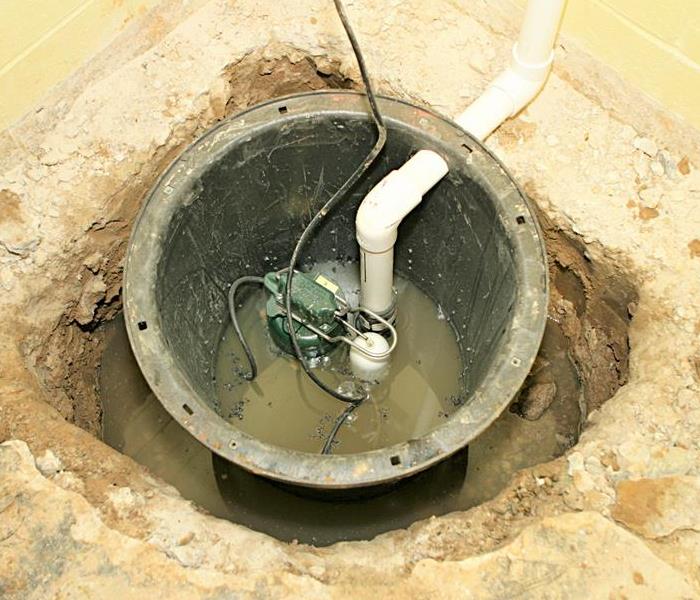What are Sump Pumps?
11/20/2020 (Permalink)
Sump pumps move water from your basement out of your home. A sump is a naturally constructed pit, usually a hole carved below the main surface of your basement floor. This pit, known as a basin, holds the sump pump. The pump is equipped with valves that sense escalating water levels or pressure. When the water gets too high, sump pumps automatically pump excess water out of the basement and away from your property using a discharge line. This line, called an effluent, connects the sump pump to a designated drainage area.
A sump pump protects your home from heavy rains and rising waters that leave behind enormous repair costs and structural damages. It's important to know which of the different types of sumps pumps best fits your needs.
Sump pumps are typically installed at the lowest point of your home. A properly functioning sump pump will kick on when water levels get too high, sending water out to help keep your basement dry. The typical sump pump runs on electricity, but if you live in an area prone to violent storms that can cause power outages you may want to consider purchasing a battery back up-operated sump pump or a water pressure-activated sump pump. The middle of a storm is a terrible time for you to discover your sump pump has failed.
Cost of a sump pump
Generally, a basement submersible sump will cost anywhere from $100-$400 depending on the horsepower and flow rate, with $500-$1000 prices for sump pumps with commercial uses. Below is a list of considerations for calculating the cost of a sump pump in your home:
1. Type of sump pump
The type of sump pump you choose for your home will determine your cost. Factors such as the material used to make the sump pump, size, horsepower, additional features, including backup battery or a specified switch type can all contribute to the cost.
2. Basement material
The floor of your basement can play a part in the cost of installation. If your basement is made of cement or concrete, then the floor will need to be removed in the lowest point of your basement where you plan to install the pump. The thicker the cement, the higher the cost of labor.
3. Drainage
If your city requires a drainage point a distance from your house, yard drainage lines or extension hoses can increase the cost of installation. Not to mention, they can be hazards to your yard or even freeze in the winter.
4. Permits
The cost of a permit will vary depending on location, so it is best to consider beforehand. The guidelines will also help you factor the cost of the job.
5. Licensed professional
Installing the sump pump yourself can cut costs dramatically if you know what you are doing. But if you are unsure, it is best to go with a licensed professional. Installation cost is cheaper than treating a flooded basement.
Performing a full maintenance check on your sump pump system is a pretty simple process that can potentially help you avoid a costly water loss.
- Before adjusting or moving sump pump, disconnect the sump pump from its electricity source.
- Remove the pump from the well and check the intake grate for any rocks or debris that could have been pulled in.
- Clear well of any debris.
- Put sump pump back in to place and reconnect to power source.
- Fill a 5 gallon bucket with water and pour in to the sump well to make sure the system kicks on and is operating as should.
- Outside your home, check the condition of the pump discharge pipe, making sure it is free of blockage and debris.
If your sump pump appears to not be operating as intended, do not hesitate to call a professional to assess your system.






 24/7 Emergency Service
24/7 Emergency Service
